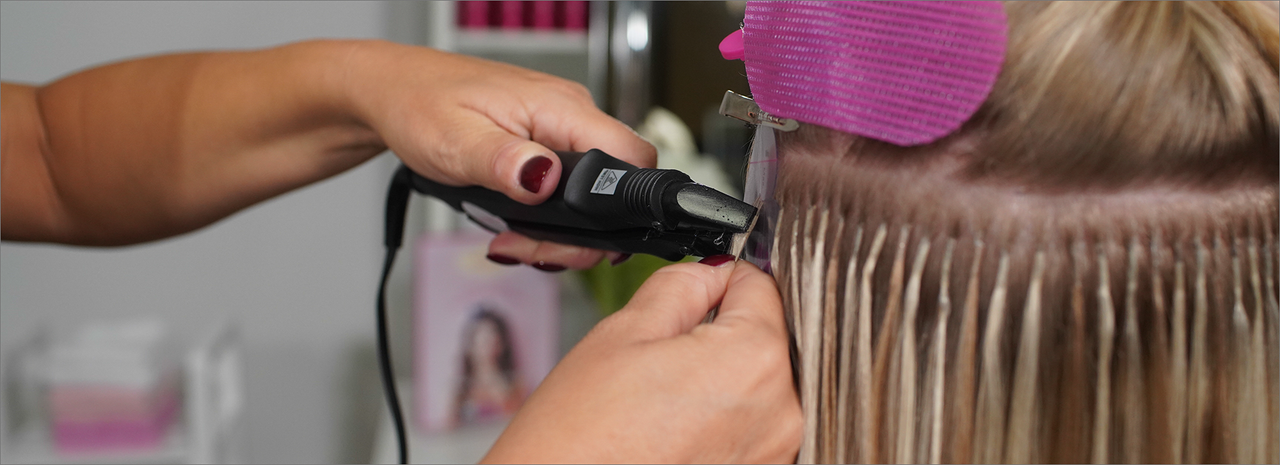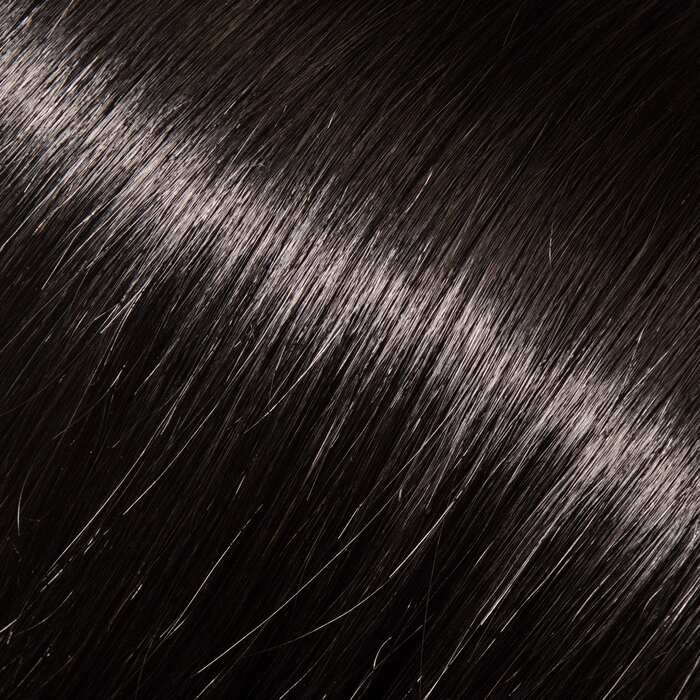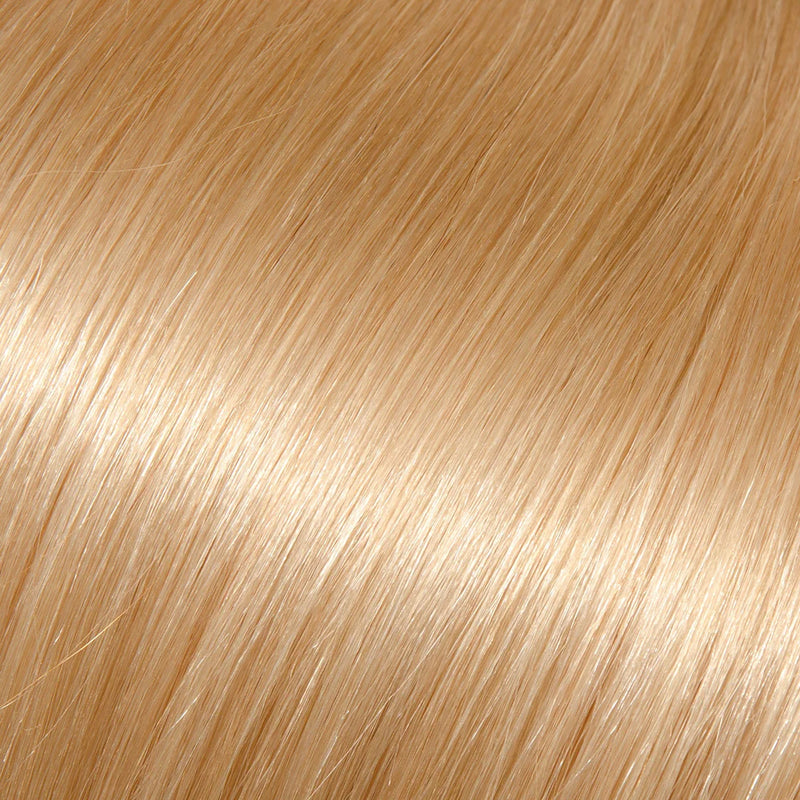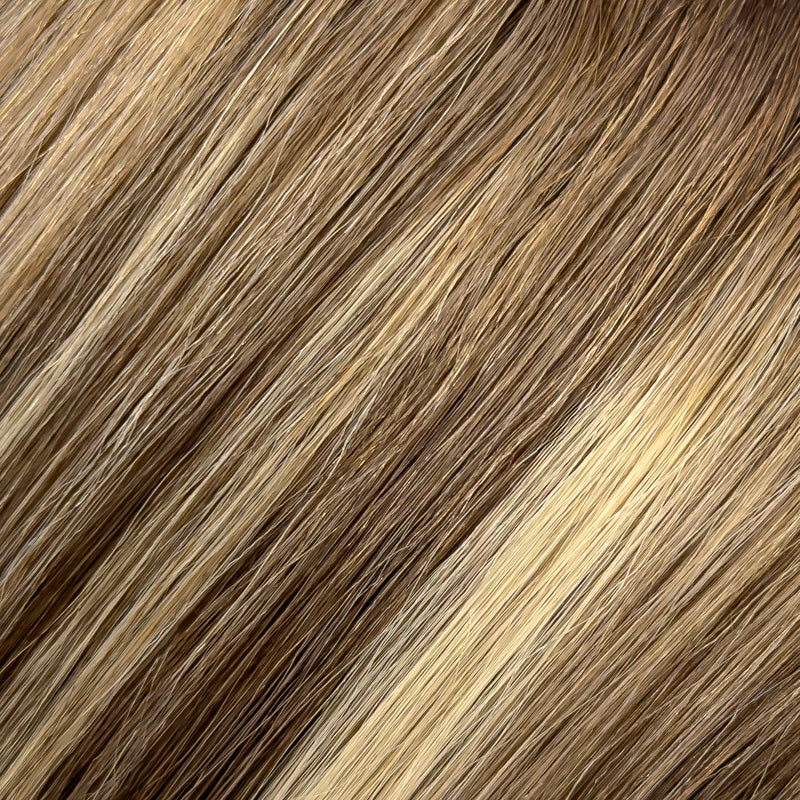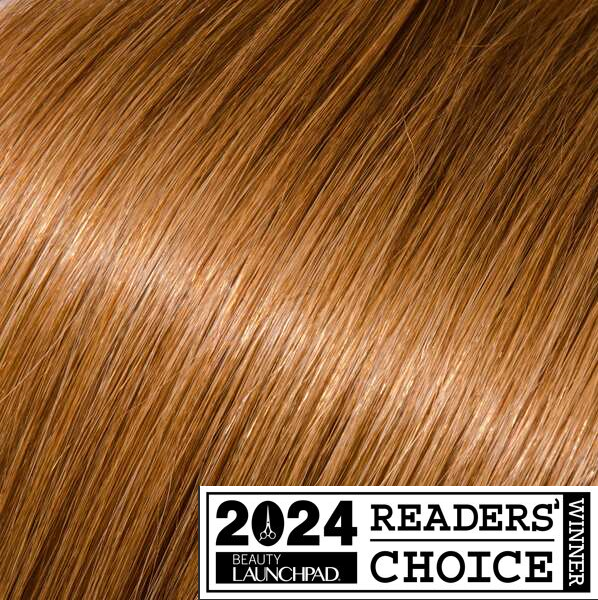We’re on the scene busting one of the most common hair myths: you can’t wear extensions with fine hair! While some legends spread across the salon floor, claiming that only thick locks can support a weft, we’re here to debunk these dreamt-up claims. After all, when Hailey Bieber’s famed bob evolved into long, dark waves (seemingly overnight), how do you think her fine-textured hair achieved such a transformation?
Let’s set the record straight on this hair extension misconception. Read on to discover our tips for selecting the best hair extensions for fine hair.
Which Hair Extensions Are Best for Fine Hair?
Anyone with thin, delicate locks wants to keep as many of their natural strands intact as possible. Some declare, however, that extensions cause further damage and lead to irreparable hair loss. While yes, it is true that there are methods designed solely for thick textures, people without this hair type need not panic. There are plenty of other extension options that can be enjoyed by those with fine hair—so long as certain precautions are taken.
When you have fine or thin strands, seeing a professional stylist is even more essential to set up the gentlest installation possible. Novices may pull the extensions too tightly or leave a residue during the removal process. Proper care for the extensions is also even more important for these clients. Heavier products, for instance, may cause buildup and tension, which can be more problematic for thin hair than thick hair.
Taking the time to choose a fine-friendly method is one of the most essential steps in protecting an extension wearer’s own hair. To ensure the most seamless installation and removal experience, these are the best options for those with fine-hair densities:
I-Tip Extensions
Because I-tips make use of microbeads, those with fine hair often appreciate the method’s heat-free and glue-free approach. I-tips also follow a strand-by-strand application, resulting in less weight on the scalp. Stylists can therefore target specific areas needing volume instead of applying an entire layer of hair.
Babe Hair’s I-Tip Extension collection in particular also features an extensive color collection. For anyone wanting to experiment with pops of color, installing an extension instead of bleaching the hair is often kinder to the delicate locks.

Fusion Extensions
In a similar vein, fusion extensions allow stylists to zero in on individual strands, linking to the hair with keratin bonds and a melting connector. The small application point combined with the fact that stylists can cut each fusion to match their clients’ exact hair density makes the fusion method one of the best types of hair extensions for fine hair. For those with more substantial hair thinning, who have a visible scalp, fusions may be a better option than wefts or tape-ins because of this seamlessness.

Hand-Tied and Hybrid Weft Extensions
While not all wefts can support a fine-hair transformation, there are some that can be worn by those with thinner hair when installed by stylist professional. A hand-tied weft extension is crafted from hairs individually sewn together into a thin strip. Compared to a machine weft’s denser and bulkier stitching, the resulting extension is more lightweight and flexible (AKA gentle on the scalp and delicate strands).
Another fine-hair game-changer, Babe’s Ideal Hybrid Weft Extensions take the lightweight design of a hand-tied weft plus a seam that can be cut to any length a stylist needs. Stylists can therefore enjoy a precise, curated placement that’s often required for those with thinner hair.

Tape-In Extensions
As one of the most lightweight extensions out there, many stylists turn to tape-ins first when reaching for fine-hair-friendly extension options. In fact, professional hairstylist and educator Mackenzie Russon uses the Babe Tape-In Extension collection to boost volume for clients experiencing hair damage and loss. Front hairs (one of the most common areas of thinning) often need an especially delicate treatment and Russon appreciates how they are “super gentle on the hair.” One Babe tip? Try using single-sided tape to reduce the number of tape-in wefts needed for the transformation by half.
When it comes to tape-in removal, some with fine hair may worry that the adhesive will either snag at the natural strands or be difficult to remove, creating buildup. Well, professional stylist Lucy Seitz (who has a devoted 1.3 million TikTok following) uses the Babe Tape-In Bond Remover to gently break down the medical-grade adhesive of our Tapes. When it’s time to remove the tape-ins, Lucy recommends applying bond remover to the adhesive, then gently peeling apart the strips and sliding them out of the hair. To prevent any potential product buildup, she washes the natural hair with a clarifying shampoo.

How Do You Choose the Best Extensions for Thin Hair?
Now that we’ve debunked a major extension myth, let’s next unpack how to sift through all the extension options out there.
- Prioritize Remy human hair: The number one rule in the extension world, choosing premium hair quality ensures the extensions blend naturally with fine strands. Because synthetic extensions are, well, not real hair, they stand out among thin locks and tangle more easily. More tangling equals more snagging and more breakage (a dangerous combo for a hair type that is already prone to damage). Choosing Remy quality, where cuticles run in the same direction as natural waves, gives your locks the gentlest treatment possible.
- Assess the weft’s thickness: One of the easiest ways to check whether an extension is compatible with fine hair is to examine the extension weft’s thickness. If the extension weft feels heavy bulky in your hand, likely it will stand out in the natural hair.
- Understand the maintenance process: Stylists should help their clients understand that certain extensions require a more intensive upkeeping process than others! While I-tips can be reapplied every 8-10 weeks and fusions every 8-16 weeks, tape-ins and wefts require reapplications every 6-8 weeks. Active clients may want to consider I-tip extensions (one of the easiest methods to pull into a ponytail) or fusion extensions (which can withstand more wear and tear from sweating).
- Favor professional methods: While at-home options, like halo extensions and clip-in extensions, are popular among newbie extension wearers, they often fail to produce seamless or long-lasting results. Since those with extremely fine strands likely have thinner hair than the extension itself, blending the two together creates the most natural look. Compared to extensions installed by a professional stylist, these DIY methods can create clunky-looking transformations.
What Hair Extensions Should You Avoid with Fine Hair?
- Bulky application points: Before installing an extension, be sure to first look at its application point. Fine hair cannot conceal beads or adhesives as easily as thick strands, so prioritizing a discreet application point is even more essential.
- Fraying/thin ends: Of course, stylists should not select the thickest extension on the shelf for those with fine hair but avoid extensions that are too thin. Often, extensions with unhealthy ends immediately out of the box contain synthetic hairs and mat fairly quickly.
- Overly processed: Hair extensions that have received excessive chemical processing may cause allergic reactions for some users. At Babe Hair, we process extensions only with a gentle treatment to maintain a high-quality result.
What Types of Extensions Can Damage Thin Hair?
As noted, those with fine hair should avoid machine weft extensions. Designed for medium to thick textures, a machine weft may pull at delicate hair pieces and likely would be hard to miss among thin strands.
An amateur removal can also lead to damage for thin hair. Glue-in hair extensions, for example, require an especially careful removal process to ensure fine strands do not tear along the way.
Can You Wear Hair Extensions with Short Hair?
The short answer? Yes! Although many assume extensions boost length alone, they’re also a vital tool for building a voluminous look. To make sure the natural hair can conceal the extensions’ application point, most stylists recommend clients have at least four to six inches of natural length to work with. For weft extensions, even five to seven inches of natural hair may make for a more seamless transformation since covering the beaded track requires more volume.
Fine-Hair Extensions at Babe
We’ve exposed extension myths, spotted synthetic hair, but what’s one certainty in the extension world? Babe Hair prioritizes providing stylists solutions for all hair types, including fine hair. As a pioneer in the weft category since 2009 and winner of Beauty Launchpad’s Readers’ Choice for Best Tape-In, our extensions create natural, seamless volume to bring hair dreams to life.
